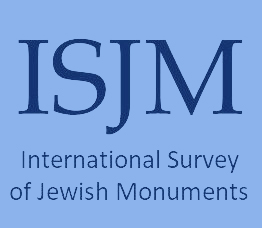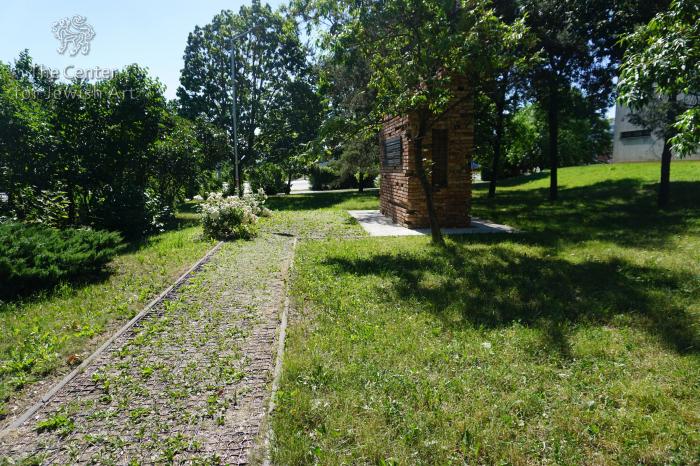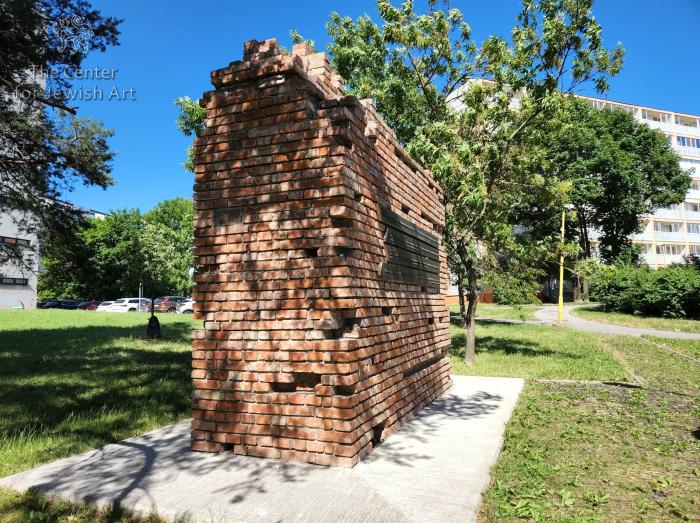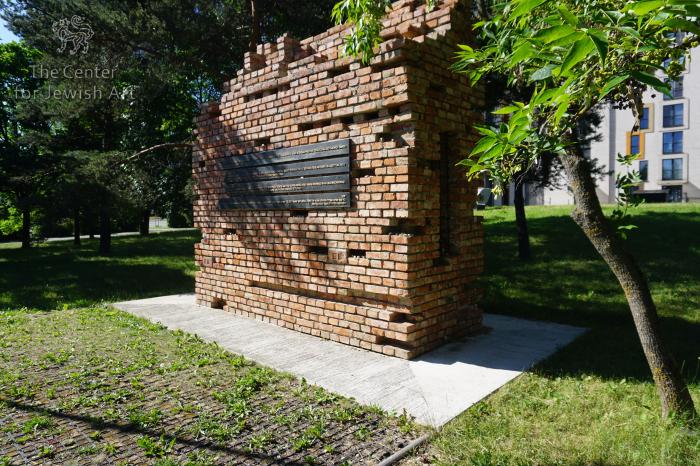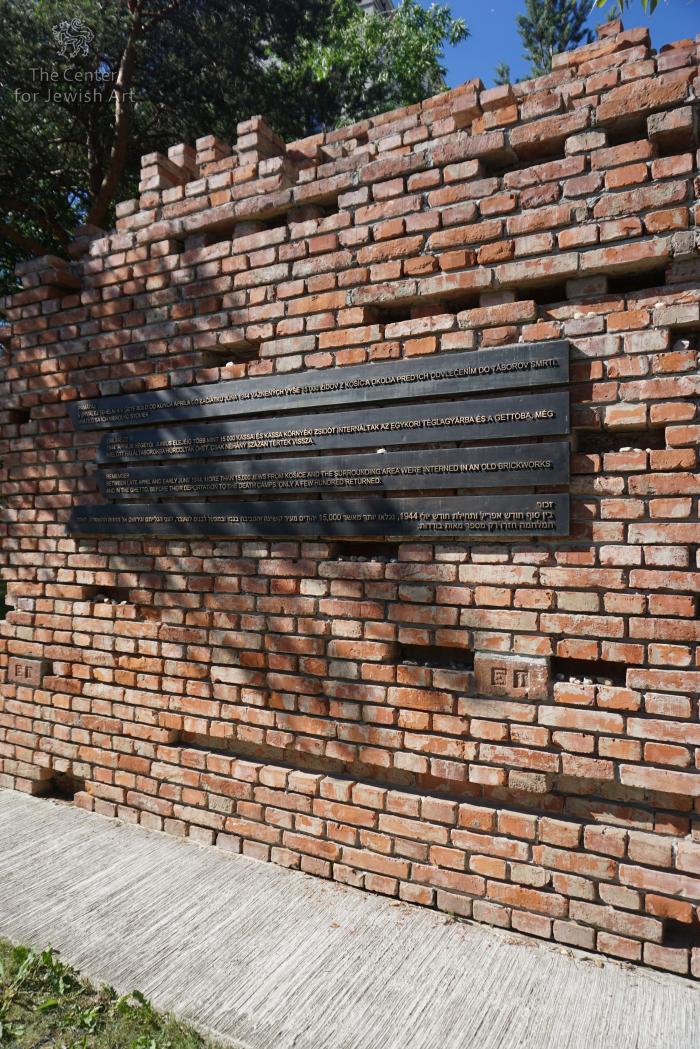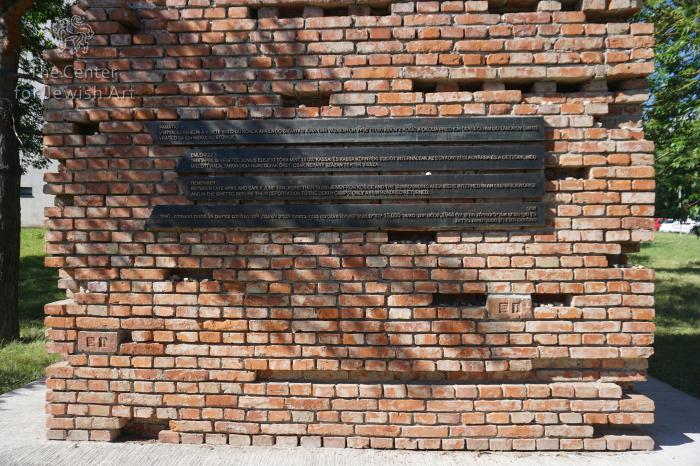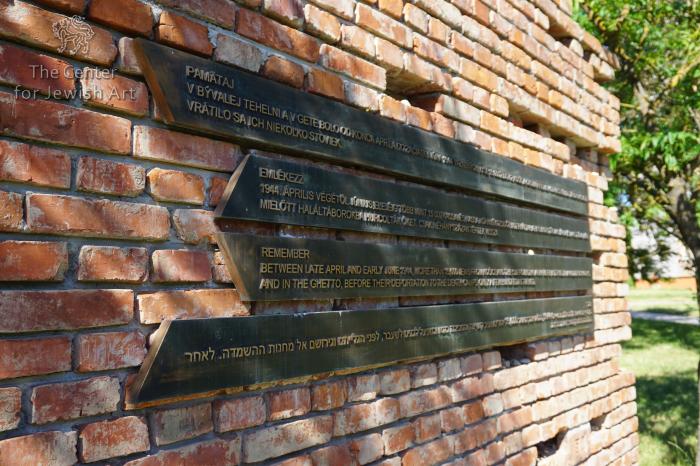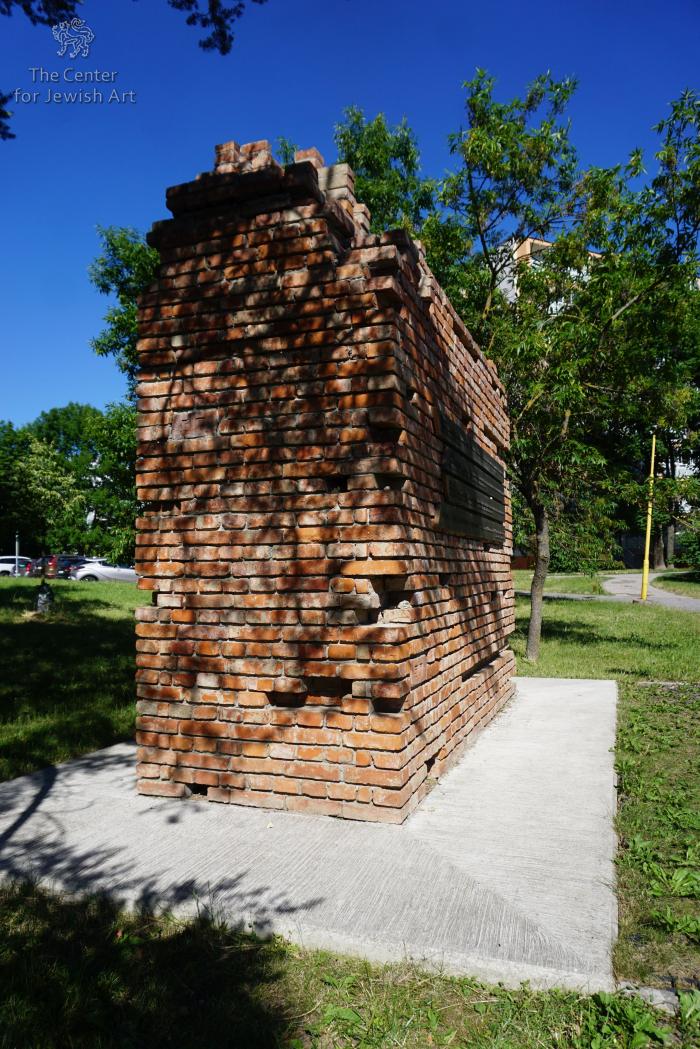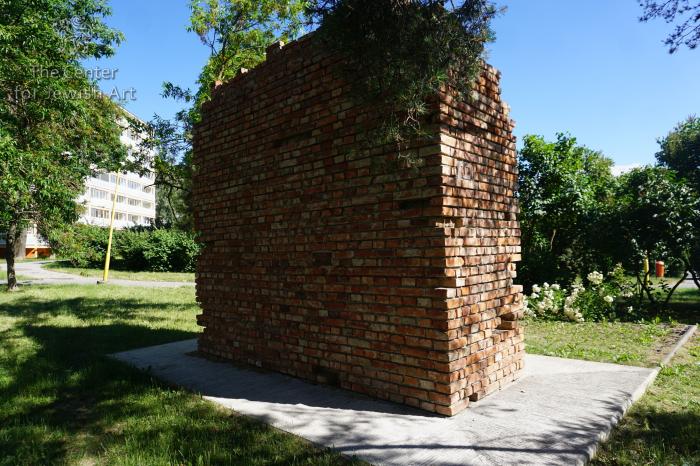Obj. ID: 46180 Ghetto Brickyards Holocaust Memorial in Košice, Slovakia, 2019

Who is commemorated?
All Jews deported during the Holocaust, especially those who were citizens on Kosice and the surrounding areas
Description
The Memorial takes the shape of a brick wall (the bricks of which were recovered from the old brickworks, where Jewish victims were interred before deportation) with several bricks intentionally left missing, to give an impression of incompleteness. On the right side of the monument is a rusty metal latice, intended to "suggest the future tragedy yet to befall the imprisoned..."
On the front of the monument are four metal plaques, each with the same inscription in Slovak, Hungarian, English, and Hebrew.
Visitors often leave stones in the crevices created by the missing bricks, which comes from a custom at Jewish graves to leave stones in memory of the deceased. While there are no remains at this symbolic site, this custom is practiced here as well.
Inscriptions
Slovak:
PAMÄTAJ
V BÝVALEJ TEHELNI A V GETE BOLO OD KONCA APRÍLA DO ZAČLATKU JÚNA 1944 VÄZNENÝCH VYŠE 15,000 ŽIDOV Z KOŠÍC A OKOLIA PRED ICH ODVLEČENÍM DO TÁBOROV SMRTI. VRÁTILO SA ICH NIEKOLKO STOVIEK.
Hungarian:
[Inscribe Hungarian here]
English:
Remember
Between late April and early June 1944, more than 15,000 Jews from Kosice and the surrounding area were interned in an old brickworks
and in the ghetto, before their deportation to the death camps, only a few hundred returned.
Hebrew:
זכור
בין סוף חודש אפריל ותחילת חודש יולי 1944 נכלאו יותר מאשר 15,000 יהודים מעיר קושיצה והסביבה בגטו ובמפעל לבנים לשעבר, לפני הגלייתם וגירושם אל מחנות ההשמדה לאחר
המלחמה חזרו רק מספר מאות בודדות
Commissioned by
"The People of Kosice"
"Made possible by the generous contributions of the citizens of Kosice and numerous supporters from all of the world"
Before World War II, the Jewish community of Kosice was a major part of the city's population, making up a fifth of the population in 1938. during the war, Kosice was first taken over by Hungary, then by Nazi Germany when they took control of the Hungarian government in March 1944. At this time the local Jewish population was forced into ghettos, and between May 16th and June 6th 1944, 15,000 Jewish men, women, and children were deported to death camps in Poland by Hungarian Police.
While waiting to be deported, roughly 12,000 of these victims were interred in an old brickyard roughly 200 meters from the memorial site, on what is today Moldavska Street.
The modern memorial was unveilled on 02/06/2019, and is the first memorial of its kind on public land in Kosice.
During the unveiling of the memorial in 2019, the following was said about the monument:
"Ït is raw, rough - just like the moments of which they are supposed to remind us.It symbolizes the two sides of a single event, on one side of the brick wall is freedom, on the other side is imprisonment, suffering, death."
"Korzar Kosice", Košice už majú pamätník holokaustu. Každá tehla je spomienkou
, https://kosice.korzar.sme.sk/c/22135576/kosice-uz-maju-pamatnik-holokaustu-kazda-tehla-je-spomienkou.html (accessed December 21, 2022)
"Memorial to the Victims of the Holocaust" Site Informational Pamphlet



